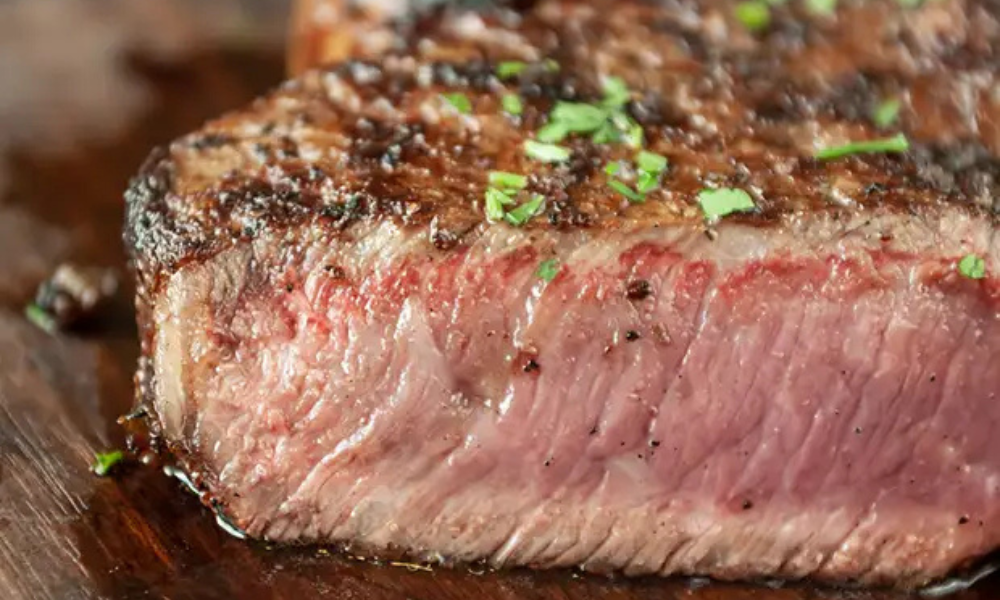
Wagyu beef has long been revered for its exceptional marbling, melt-in-your-mouth texture, and unparalleled flavor. While many people are familiar with Japanese Wagyu, Texas Wagyu is starting to make a name for itself in the world of premium beef. But what is American Wagyu?
Let’s explore the unique characteristics of Texas “American” Wagyu, how it compares to its Japanese counterpart, and where you can indulge in the finest cuts in Dallas.
What Is American Wagyu?
American Wagyu is a crossbreed of traditional Japanese Wagyu cattle and high-quality American cattle breeds, such as Angus. This combination results in a beef that offers the best of both worlds: the rich marbling and tenderness of Wagyu combined with the bold, beefy flavor preferred by American palates. Texas has become a prime location for producing some of the best American Wagyu available with its vast ranching heritage and ideal cattle-raising conditions.
How Is American Wagyu Graded?
The United States uses the USDA grading system, categorizing beef based on marbling, color, and maturity. While Japanese Wagyu follows a strict A1-A5 rating system, American Wagyu typically falls into USDA Prime or even surpasses it with its own grading scales, such as the Beef Marbling Score (BMS). Many Texas Wagyu ranchers aim for high BMS ratings to ensure top-tier quality that rivals the best beef in the world.
The History of American Wagyu
Wagyu cattle first arrived in the U.S. in the 1970s, and over the decades, ranchers have perfected the breeding process to enhance the unique characteristics of this prized beef. Texas has played a pivotal role in developing American Wagyu with its deep ranching culture and innovative agricultural practices.
Today, ranches across the state have refined their methods to produce beef that maintains the luxurious texture of Japanese Wagyu while offering a robust, uniquely Texan flavor profile.
Key Differences Between American and Japanese Wagyu
Here are a few things that make American Wagyu distinct from Japanese Wagyu:
- Marbling: Japanese Wagyu, particularly A5-grade, has intense marbling, creating an almost buttery texture. While still incredibly marbled, Texas Wagyu has slightly less fat content, resulting in a meatier bite.
- Flavor Profile: Japanese Wagyu has a delicate, almost sweet taste due to its high intramuscular fat. Thanks to its hybrid breeding, Texas Wagyu features a more pronounced beefy flavor with a hint of richness.
- Raising Practices: In Japan, Wagyu cattle are raised with highly regulated feeding programs and meticulous care. In Texas, Wagyu cattle are grass-fed or grain-finished and thrive in the state’s open pastures and premium feeding programs.
Where to Eat Texas Wagyu
If you’re ready to experience the best Texas Wagyu has to offer, look no further than Al Biernat’s in Dallas. Known for its commitment to premium cuts and exceptional dining experiences, Al Biernat’s serves top-tier Texas Wagyu that will satisfy even the most discerning steak connoisseurs.
Sides We Suggest
To elevate your Wagyu experience, consider pairing your steak with some of Al Biernat’s expertly crafted sides. Here are a few recommendations:
- Mac & Cheese – A creamy, indulgent complement to the rich flavors of Wagyu.
- Roasted Brussels Sprouts with Bacon – A perfect balance of savory and slightly sweet.
- Lobster Risotto – A decadent side that pairs beautifully with Wagyu’s buttery texture.
- Creamed Corn – A classic Texas favorite that enhances the beef’s natural sweetness.
Only the Finest: Al Biernat’s
At Al Biernat’s, quality and excellence are paramount. Our carefully curated menu offers an exquisite selection of Wagyu cuts, ensuring that every bite delivers the rich, tender, and flavorful experience that defines Texas Wagyu. Whether you’re a seasoned steak lover or trying Wagyu for the first time, Al Biernat’s provides a dining experience showcasing the best Texas-raised beef.
For an unforgettable meal, reserve your table at Al Biernat’s and savor the remarkable taste of Texas Wagyu. Your taste buds will thank you.
